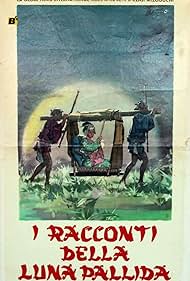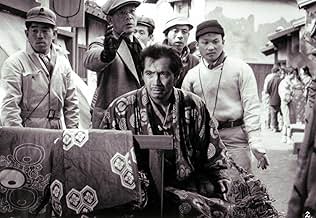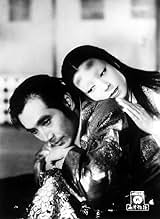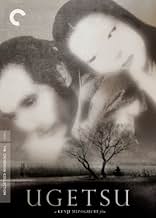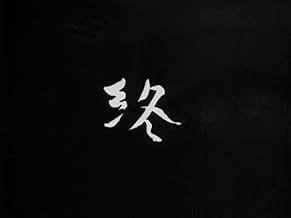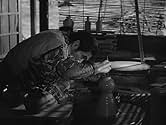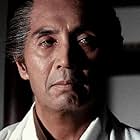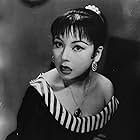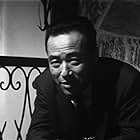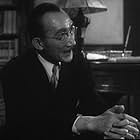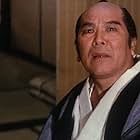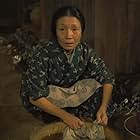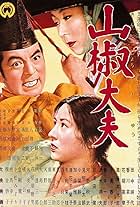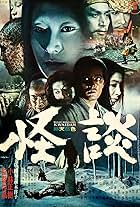VALUTAZIONE IMDb
8,1/10
26.520
LA TUA VALUTAZIONE
Una storia di ambizione, famiglia, amore e guerra ambientata nel bel mezzo delle guerre civili giapponesi del sedicesimo secolo.Una storia di ambizione, famiglia, amore e guerra ambientata nel bel mezzo delle guerre civili giapponesi del sedicesimo secolo.Una storia di ambizione, famiglia, amore e guerra ambientata nel bel mezzo delle guerre civili giapponesi del sedicesimo secolo.
- Candidato a 1 Oscar
- 6 vittorie e 2 candidature totali
Eitarô Ozawa
- Tôbei
- (as Sakae Ozawa)
Trama
Lo sapevi?
- QuizThe plot is a combination of two tales from the work of Ueda Akinari called "Tales of moon and rain".
- BlooperAfter the soldier cuts off the general's head there's no blood on his sword.
- ConnessioniFeatured in De l'origine du XXIe siècle (2000)
Recensione in evidenza
Having read much about this film, I thought I knew what to expect when I finally had the chance to see it. I was wrong; no amount of writing can convey the richness and impact of the images and the overall flow of the film-- which is why this commentary will be brief. Suffice it to say that I recommend this film wholeheartedly to anyone looking for cinematic poetry (though not, probably, to those who, misled by its being set during the Japanese Civil Wars, expect an action film).
Perhaps the most striking thing about the film is the camera-work; on a first viewing one is scarcely aware of it much of the time, but the camera is in constant motion, emblematic of the restlessness which pervades not only the era and the central characters but, by implication, all of human life (in this regard, it's a very Buddhist film). This movement is never gratuitous; when the scene demands little or no movement the camera stays still. Notice, though, how often the camera's movement enhances the emotional impact of the scene, especially in the famous panning shot (not, as occasionally described, a 360 degree shot) of the reunion near the end. Along with this is Mizoguchi's penchant for long takes, which seduce the viewer into the rhythm of the film without calling attention to themselves or to his cleverness as a director.
But these are technical comments which may or may not be helpful in focussing a viewer's attention; what really matters is the film itself as a whole. It is truly beautiful, and powerful in the unexpected way of great poetry. Technique and emotion, simplicity of means and complexity of effects, walk hand-in-hand here, and the result is remarkable in a way which film rarely attains.
Perhaps the most striking thing about the film is the camera-work; on a first viewing one is scarcely aware of it much of the time, but the camera is in constant motion, emblematic of the restlessness which pervades not only the era and the central characters but, by implication, all of human life (in this regard, it's a very Buddhist film). This movement is never gratuitous; when the scene demands little or no movement the camera stays still. Notice, though, how often the camera's movement enhances the emotional impact of the scene, especially in the famous panning shot (not, as occasionally described, a 360 degree shot) of the reunion near the end. Along with this is Mizoguchi's penchant for long takes, which seduce the viewer into the rhythm of the film without calling attention to themselves or to his cleverness as a director.
But these are technical comments which may or may not be helpful in focussing a viewer's attention; what really matters is the film itself as a whole. It is truly beautiful, and powerful in the unexpected way of great poetry. Technique and emotion, simplicity of means and complexity of effects, walk hand-in-hand here, and the result is remarkable in a way which film rarely attains.
I più visti
Accedi per valutare e creare un elenco di titoli salvati per ottenere consigli personalizzati
- How long is Ugetsu?Powered by Alexa
Dettagli
Botteghino
- Lordo Stati Uniti e Canada
- 11.197 USD
- Fine settimana di apertura Stati Uniti e Canada
- 6.154 USD
- 5 mar 2017
- Lordo in tutto il mondo
- 24.959 USD
- Tempo di esecuzione1 ora 36 minuti
- Colore
- Proporzioni
- 1.37 : 1
Contribuisci a questa pagina
Suggerisci una modifica o aggiungi i contenuti mancanti

Divario superiore
By what name was I racconti della luna pallida di agosto (1953) officially released in India in English?
Rispondi